- Call us: 01444 237070
- Contact Us
- Stores
- Sign In / Register
-
- Back
- Used Cameras
- Used Accessories
- Used Lenses
- Used Video
- Used Film Equipment
- Used Stock Alert
- Used Blank Test
- Sell or Part Exchange
- Used Clearance
- Recently Added Used Equipment
- Park Picks
- All Used Black Friday Deals
- Faulty
- Trade-In
- Blog
- New in
- Call us
- Contact us
- Stores
- Sign in
- Categories
- Tips & Inspiration
- Reviews
- News
- Events
- Features
- Buying Guides
- Competitions
Sony A7C II and A7CR Camera Review
It’s not everyday a camera manufacturer surprises you with the release of not one, but two cameras simultaneously. That is precisely what Sony has done with the second generation A7C II, which was launched alongside an all-new high resolution A7CR, both of which are available in silver and black versions.
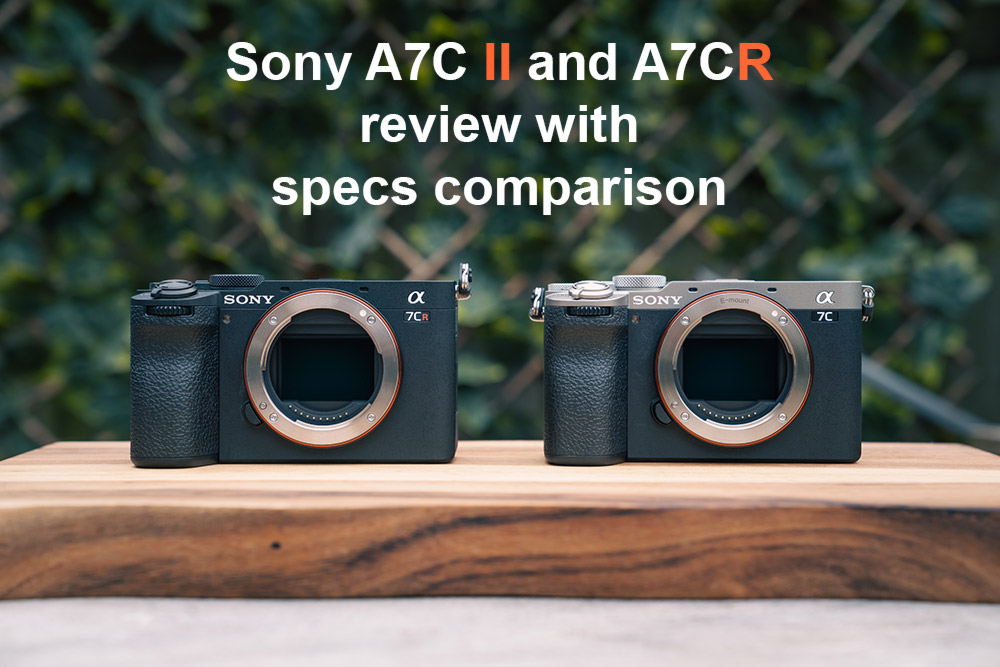
The C-series is the lightest and most portable full-frame range from Sony’s mirrorless camera line-up, which have proven popular with content creators who want the characteristics of full-frame, without the cumbersome size and weight.
Our Sony A7C II and A7CR camera review has all of the specs, comparison tables, sample images and even a video review of these two cameras, in order for you to compare them both to their closest allies from Sony's mirrorless line-up.
So without further ado, let’s dive in and see what these two hybrid mirrorless cameras offer, how to choose between them, and whether you should upgrade from the original A7C.
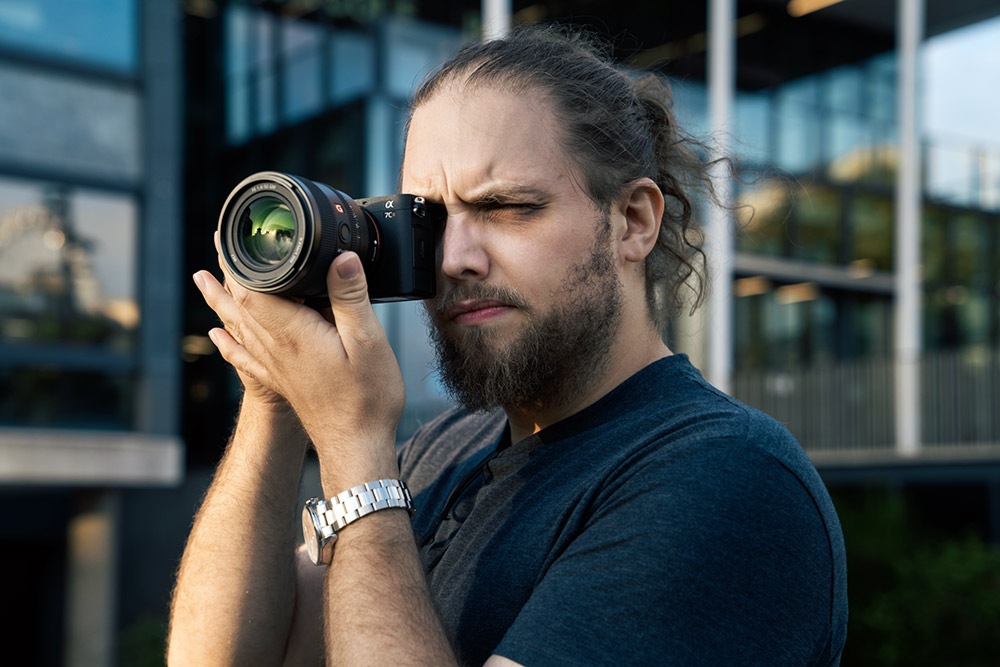
When were the Sony A7C II and A7CR released?
The second generation Sony A7C II and new A7CR cameras were both released on 29 August 2023, following the 2020 launch of the original full-frame A7C. A lot has changed in those three years and Sony has upgraded the A7C mark II significantly, and introduced a high-resolution 61MP A7CR.
The A7C II interchangeable body is available in A7C II Black and A7C II Silver, as are the two high-res models, with the Sony A7CR Black and Sony A7CR Silver. There is also a lens kit for the standard camera in both colours, which is listed below.
Key Sony A7C II upgrades
Sony’s A7C II boasts an extensive list of upgrades, with hybrid technology ported across from the A7 IV, A7R V and ZV-E1 cameras. It even includes some video features from cinema-line cameras such as the FX3, ensuring you can create both high-quality stills and video. We’ve highlighted 10 of the A7C II’s most significant upgrades:
- Upgraded 33 megapixel Exmor R full-frame CMOS sensor with 94% AF coverage
- Upgraded BIONZ XR image processor
- New Dedicated AI processor for realtime subject recognition and tracking
- Upgraded 5-axis in-body stabilisation for up to 7-stops shake compensation
- Upgraded Video at 4K 60p (Super 35) in 4:2:2 10-bit
- Added S-Cinetone profile, Creative Looks and Monitor LUTs
- Added Breathing compensation / AF Assist / Focus Map
- Added Auto Framing and Active mode stabilisation
- Upgraded to Sony’s new menu system with touch and swipe control
- Updated body design with improved grip, higher magnification EVF, new front dial, C1 & C2 buttons and S&Q dial, for a greater ability to customise and control the body
The sum effect of these new features and upgrades are to provide higher image quality, with improved colour reproduction, evolved subject recognition and overall improvements to useability.
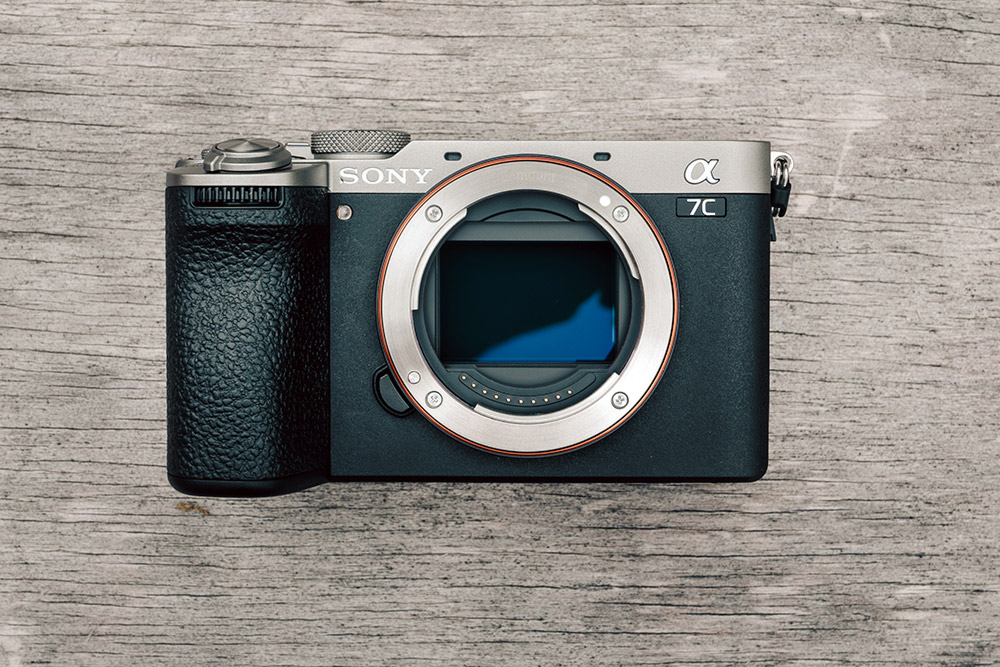
What are the differences between the Sony A7C II and A7CR?
You could consider the A7C II as a 50/50 hybrid camera, which is equally suitable for stills and video, whereas the A7CR is an 80/20 photo-centric camera, primarily aimed at photographers. The key difference between the two is the sensor, with the A7CR touting a 61 megapixel full-frame sensor.
This sensor has slightly slower readout speeds with fewer AF points and bursts at fewer frames per second, which is expected from such high resolution. This means video from the A7C II will show less rolling shutter, and fires at up to 10fps vs 8fps with full AF/AE for both. Neither is a slouch by any means, and will keep up with fast moving subjects such as pets, wildlife and vehicles.
The high res model does have a trick up its sleeve with Multi shot mode, which provides the additional ability to shift the sensor and record up to 16 frames, for incredible images equivalent to 963.2 million pixels. These can be stitched together in post using your computer with the Imaging Edge Desktop app, for PC and Mac, available on the creators cloud website.
The bodies themselves are identical, with the same controls, EVF and new LCD control, which flips out for selfie-style content, vlogging and tricky shooting angles.
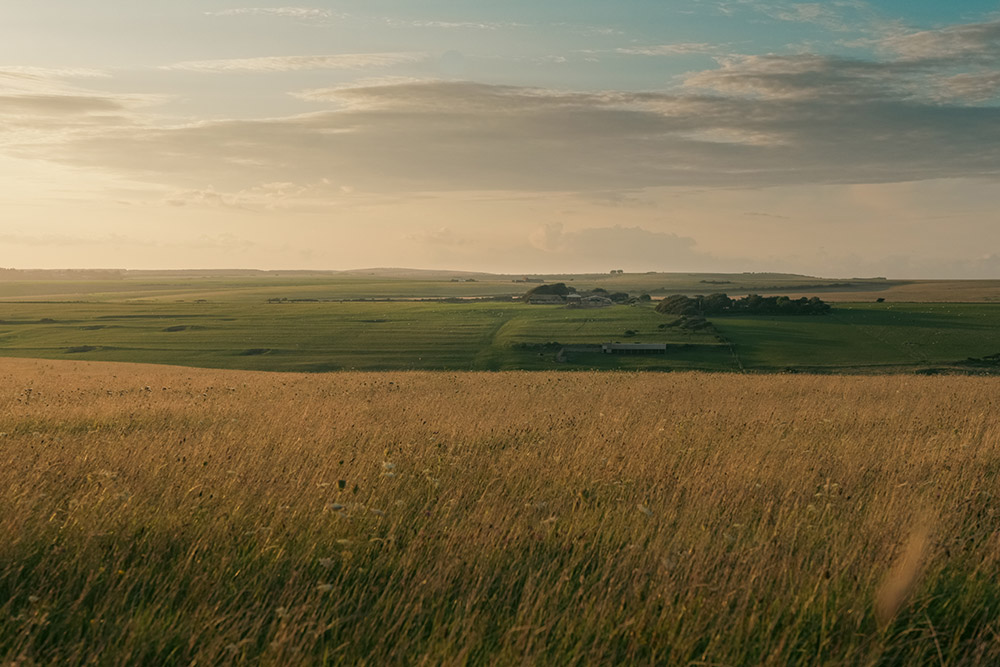
Sample landscape: Sony A7CR with Sony FE 16-35mm f/2.8 GM II @35mm. Exposure: 1/1600sec. f/5.6. ISO 800
Specs comparison A7C vs A7C II Vs A7 IV Cameras
The table below compares the original A7C, second generation A7C II and A7 IV camera, which is endearingly known as Sony’s baby A1. Despite a jump in resolution, faster processor and the addition of an AI processor, the A7C II is barely larger or heavier, staying true to the Compact philosophy.
|
|
Original A7C |
||
|
RRP |
£1,699.00 |
£2,099 |
£2,399.00 |
|
Size (approx) mm |
124 x 71.1 x 59.7 |
124 x 71.1 x 63.4 |
131.3 x 96.4 x 79.8 |
|
Weight |
509g |
514g |
658g |
|
Sensor |
Full-frame Exmor R CMOS sensor |
Full-frame Exmor R CMOS sensor |
Full-frame Exmor R CMOS sensor |
|
Resolution |
24.2 megapixels |
33 megapixels |
33 megapixels |
|
Processor |
BIONZ X |
BIONZ XR |
BIONZ XR |
|
ISO range |
ISO 100-51,200 |
ISO 100-51,200 |
ISO 100-51,200 |
|
In-body stabilisation |
5-stops |
7-stops |
5.5-stops |
|
Phase-detection focus points |
693 points / 93% coverage |
759 points / 94% coverage |
759 points / 94% coverage |
|
AF |
Realtime Eye AF (Human / Animal) |
Realtime recognition AF with AI processor |
Realtime Eye AF (Human / Animal / Bird) |
|
Burst shooting |
10fps with AF/AE |
10fps with AF/AE |
10fps with AF/AE |
|
Max Movie quality |
4K 30p 8-bit 4:2:0 |
4K 60p 10-bit 4:2:2 |
4K 60p 10-bit 4:2:2 |
|
Profiles |
Creative style / S-log3 |
Creative Look / S-log3 / S-Cinetone / M-LUT / Auto Framing |
Creative Look / S-log3 / S-Cinetone / M-LUT / Auto Framing |
|
Breathing compensation |
N/A |
YES |
YES |
|
AF Assist |
N/A |
YES |
YES |
|
Focus Map |
N/A |
YES |
YES |
|
Active Mode stabilisation |
N/A |
YES |
YES |
|
Menu |
Older version |
New menu / control |
New menu / control |
|
EVF |
0.39 type (XGA OLED) 2,359K dots (0.59x) |
0.39 type (XGA OLED) 2,359K dots (0.7x) |
0.39 type (XGA OLED) 2,359K dots (0.7x) |
|
LCD |
3.0-type type, 921K dots Vari-angle |
3.0-type type, 10,360K dots Vari-angle |
3.0-type type, 10,360K dots Vari-angle |
|
Battery LCD/Finder |
740 / 680 |
560 / 530 |
580 / 520 |
|
Memory card |
Single SD card slot UHS-II |
Single SD card slot UHS-II |
Sony A7C II video performance
Sony’s 33MP sensor is a backside illuminated (BSI) CMOS sensor, which provides fast readout speeds and beautiful video quality, that can be recorded in:
- 4K 30p in full-frame with 7K oversampling
- 4K 60p in Super 35 format (APS-C) with full pixel readout without binning.
- Full HD at 120p for 5x slow motion playback
- Recording format: 4:2:2 10-bit All-intra S-Log3 gamma curve
- Compression modes include XAVC S-I and XAVC HS with S-Cinetone, Creative Looks and Log with HLG
Both cameras can import LUTs for more accurate previews when recording in Log profiles, which results in consistent footage and a wide dynamic range when colour grading during post. They also include a digital audio interface, which can record up to 4 channel audio and harness Sony’s energy efficient digital shoe interface for compatible external microphones, XLR adapter and Sony flashguns.
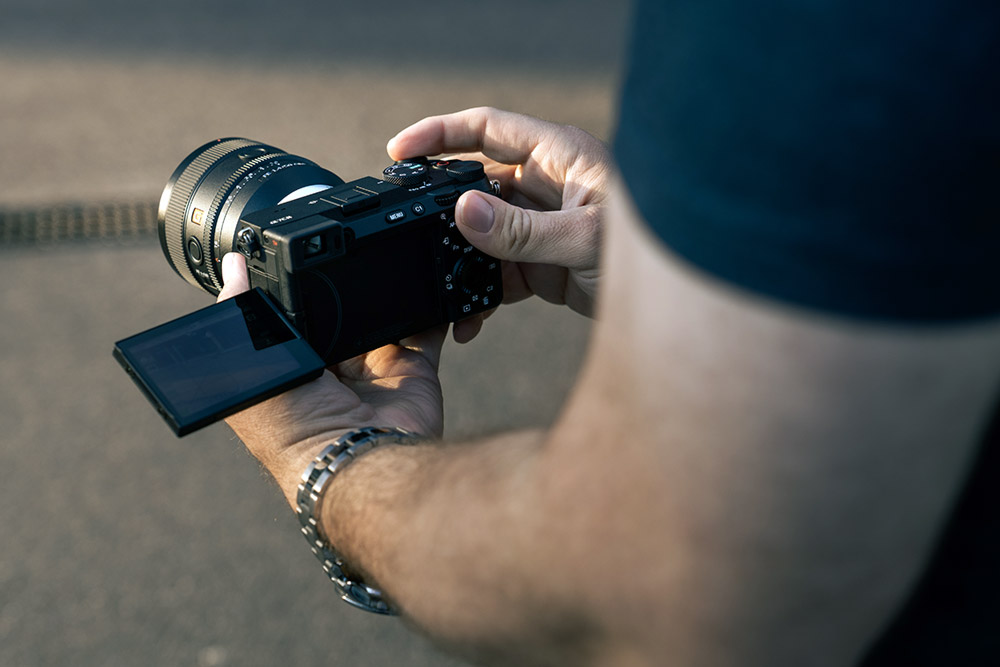
Specs comparison A7C vs A7CR Vs A7R V Cameras
The table below highlights key specifications between the original A7C, high resolution A7CR and Sony’s original flagship high-resolution A7R V camera. Despite a signifiant jump in resolution, processor speed and the addition of an AI processor, the A7CR holds its own with battery life (thanks to the Sony NP-FZ100), low light performance and stabilisation.
|
|
Original A7C |
||
|
RRP |
£1,699.00 |
£3199 |
£3,999.00 |
|
Size (approx) |
124 x 71.1 x 59.7 |
124 x 71.1 x 63.4 |
131.3 x 96.9 x 82.4 |
|
Weight |
509g |
515g |
723g |
|
Sensor |
Full-frame Exmor R CMOS sensor |
Full-frame Exmor R CMOS sensor |
Full-frame Exmor R CMOS sensor |
|
Resolution |
24.2 megapixels |
61 megapixels |
61 megapixels |
|
Processor |
BIONZ X |
BIONZ XR |
BIONZ XR |
|
ISO range |
ISO 100-51,200 |
ISO 100-32,000 |
ISO 100-32,000 |
|
In-body stabilisation |
5-stops |
7-stops |
8-stops |
|
Phase-detection focus points |
693 points / 93% coverage |
693 points / 79% coverage |
693 points / 79% coverage |
|
AF |
Realtime Eye AF (Human / Animal) |
Realtime recognition AF with AI processor |
Realtime recognition AF with AI processor |
|
Burst shooting |
10fps with AF/AE |
8fps with AF/AE |
10fps with AF/AE |
|
Max Movie quality |
4K 30p 8-bit 4:2:0 |
4K 60p 10-bit 4:2:2 |
8K 24p 10-bit 4:2:0 |
|
Profiles |
Creative style / S-log3 |
Creative Look / S-log3 / S-Cinetone / M-LUT |
Creative Look / S-log3 / S-Cinetone / M-LUT |
|
Breathing compensation |
N/A |
YES |
YES |
|
AF Assist |
N/A |
YES |
YES |
|
Focus Map |
N/A |
YES |
YES |
|
Active Mode stabilisation |
N/A |
YES |
YES |
|
Menu |
Older version |
New menu / control |
New menu / control |
|
EVF |
0.39 type (XGA OLED) 2,359K dots |
0.39 type (XGA OLED) 2,359K dots |
0.64 type (QXGA OLED) 9437K dots |
|
LCD |
3.0-type type, 921K dots Vari-angle |
3.0-type type, 10,360K dots Vari-angle |
3.2-type type, 20,095K dots Multi-angle |
|
Battery LCD/Finder |
740 / 680 |
530 / 490 |
530 / 440 |
|
Memory card |
Single SD card slot UHS-II |
Single SD card slot UHS-II |
Sony A7CR video performance
Sony’s 61MP sensor is extremely high resolution, which enables video to be recorded in:
- 4K 60p full-frame recording with full pixel readout with pixel binning and 1.2x crop
- 4K 30p in full-frame with 6.2K oversampling (Super 35 format)
- 4:2:2 10-bit is available
- Full HD at 120p for 5x slow motion playback
- Compression modes include XAVC S-I and XAVC HS with S-Cinetone, Creative Looks and Log
Although aimed at photographers, the A7CR can create beautifully cinematic video and slow motion movies for strong content suited to any channel.

Sample portrait: Sony A7CR with Sony FE 50mm F/1.4 GM Lens. Exposure: 1/1250sec. f/1.4. ISO 100
Real-time Subject Recognition AF
Autofocus is one of the most significant upgrades for the A7C II and A7CR, with both cameras inheriting a dedicated AI processor, enabling a wider range of subjects to be recognised and tracked more accurately. These include:
- Humans (Eye/Face/Head/Body/Pose estimation)
- Animal / Bird (Eye/Face/Head/Body/)
- Insects
- Cars and Trains
- Aircraft
Along with improved AF, the dedicated processor provides improved accuracy of WB control, which means that shooting in different lighting conditions yields more accurate results. Colour is further enhanced by the BIONZ XR engine, which achieves better exposure control and colour accuracy, especially when exposing for skin and faces. The results are impressive, with less need to adjust colour and exposure in post and more sharp keepers across a range of subjects.
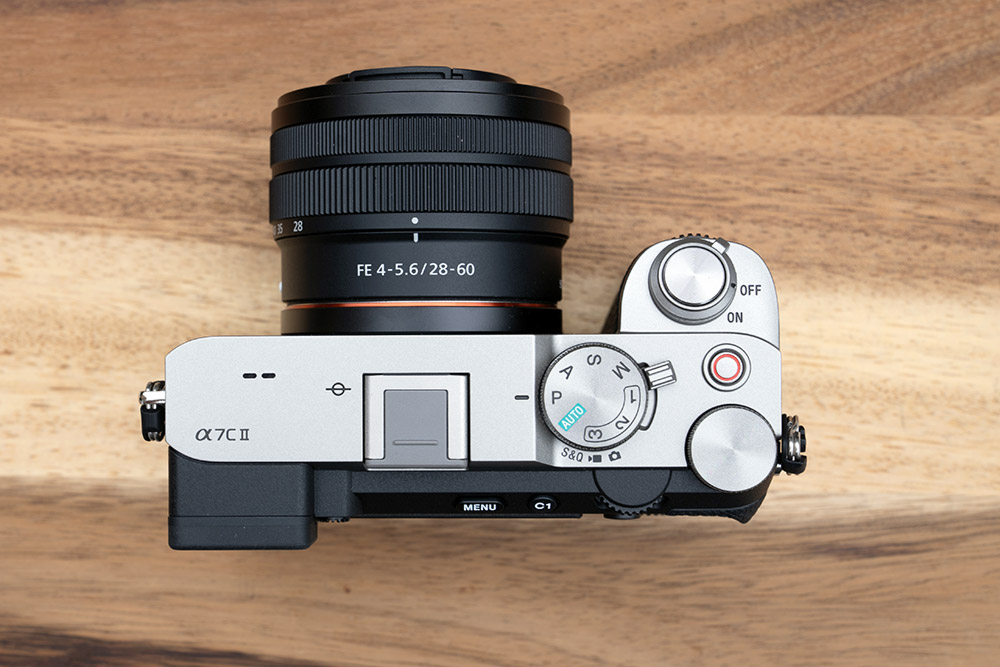
Which lenses to choose?
You can choose the perfect collection of optics to suit your style of content from an extensive line-up of Sony mirrorless lenses, which are available from not just Sony but third party manufactures Sigma, Samyang, Voigtlander and ZEISS, amongst others.
There are literally 100s of options to suit every style of photo and video and Sony has made the choice easier for newcomers to the system, with a lens kit option in both colours:
- Sony A7C II Camera Black with 28-60mm Zoom Lens Kit
- Sony A7C II Silver Camera with 28-60mm Zoom Lens Kit
Sony’s compact 28-60mm full-frame lens in these kits is the lightest in its class, offers a versatile zoom range and great results on the new body. Read our guide if you’re wondering How To Choose The Best Sony Lenses, which offers insights into various models and which type of content they’re best suited to.
The Sony FE 16-35mm f/2.8 GM II Wide Angle Zoom Lens is a new addition released at the same time as the cameras. This wide angle zoom could tempt serious enthusiasts and professional creators who capture video, vlogs, landscapes and cityscapes, thanks to its low weight and incredible four motor focus system.
The best A7C II and A7CR accessories
Both of these Sony models are made for storytelling and include a Multi Interface Shoe, Mic Terminal and Headphone Terminal in order to add video accessories and elevate your content. This opens up a huge range of options to choose from Sony, as well as dozens of other high-quality options from industry-leading names like Rode, DJI and Sennheiser, and require the cost effective Multi Interface Shoe Adapter to be attached.
Microphones such as Sony’s own MI shoe ECM-B10 Wireless Shotgun Microphone and the newly developed omni-directional Sony ECM-M1 Shotgun Microphone will capture compelling professional-level digital audio.
For flash and off-camera flash lighting you can choose between the super compact Sony HVL-F20M Flashgun, which features a unique switch on/off by simply adjusting the angle of the flash head. Higher light output models include the popular HVL-F28RM Flashgun and largest Sony HVL-F60RM2, all of which can be used to remotely trigger other lights in a group.
With a standard headphone jack you’ll be able to monitor audio with virtually any pair of headphones to suit any budget. Choose between models such as the Sennheiser HD 200 PRO, which cost just £58.99, through to high-end options including the ultra-light Sennheiser HP 02-140 Headphones, with very good acoustic quality.
Sony a7C II Video Review
Sony a7CR Video Review
Sony has pulled out all the stops with the second generation A7C II upgrades, which takes a full-frame compact camera to the next level for stills, video and hybrid content creators. It has been enhanced inside and out, with improved ergonomics, better image quality and significantly upgraded focus that adds a dedicated processor, new subjects and realtime recognition AF.
Meanwhile, the A7CR has joined the compact full-frame series, which comes with the same body style, but higher resolution for greater crop potential and infinite detail, with a minor trade-off in video pixel binning and burst shooting speed. The R-version (resolution) boasts the same image processor and AI processor for extraordinary AF capabilities.
Reserve your second generation Sony A7C II Mirrorless Camera Body Black or A7C II Camera Body Silver and harness features to create pro-level stills and video content. If you crave the highest possible image quality with more room to frame and crop your images, choose from the Sony A7CR Mirrorless Camera Body Black or Sony A7CR Mirrorless Camera Body Silver and discover remarkable levels of detail in your images.
If you are upgrading from an older camera, why not try our free trade-in service and enjoy a completely hassle-free process.
Share this post:
By Nick Dautlich on 29/08/2023
Nick Dautlich
Senior Content Writer and Product Reviewer
Nick Dautlich is the Senior Content Writer and Product Reviewer at Park Cameras, with over 15 years of photography experience. A Sony Imaging Professional and expert reviewer, Nick has worked with major brands such as Canon, Sony and Nikon. His work is also featured on Vanguard World UK’s website, Capture Landscapes, and Shutter Evolve. Nick’s photography includes National Trust projects and magazine covers and he is passionate about landscapes and storytelling. Nick also enjoys hiking and teaching his children about nature. Learn more on his profile page.
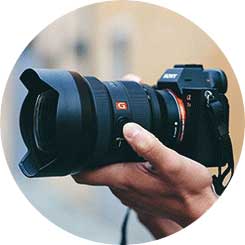
Trade in your old equipment
Fast and easy trade in service ensures your old gear is collected efficiently and you are paid quickly! It's very simple to trade in your unwanted photography gear. Just head over to our dedicated Sell or Part Exchange page, fill out the details, and we'll get back to you with an offer for your old gear. Take the cash, or put it towards the cost of your new gear. It's up to you! Find out more
sign up to the newsletter
Keep up to date on the latest photography news, events and offers. Sign up now
